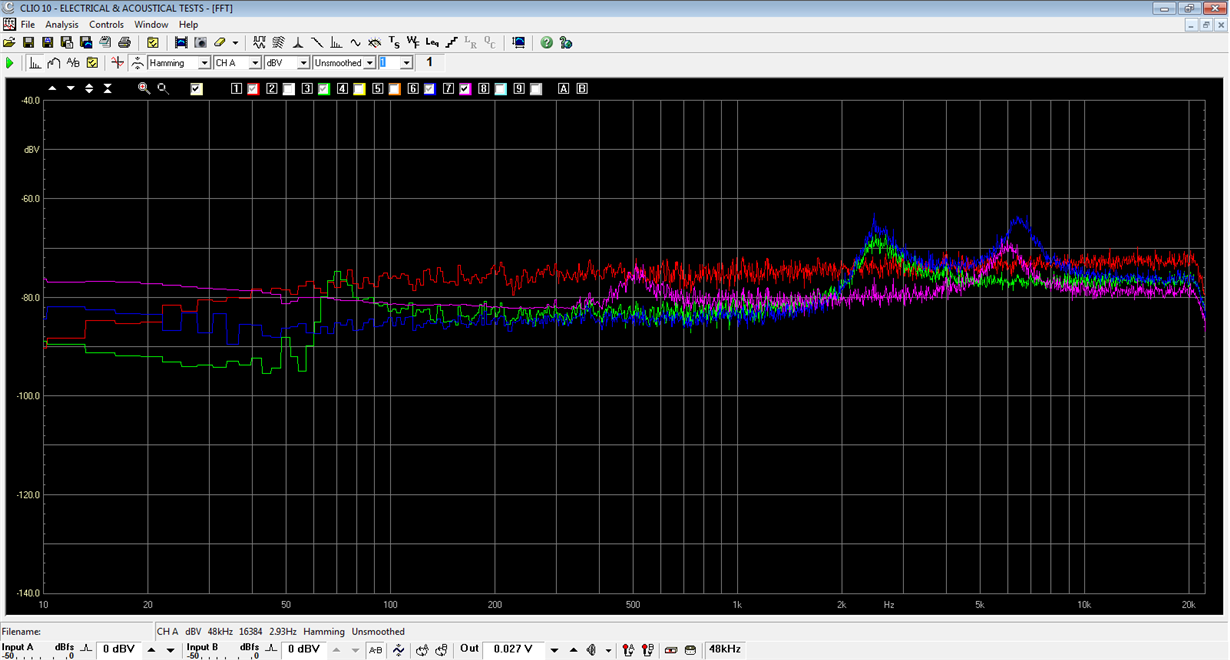Tool/software: Linux
I'm trying to use the digital effects LB1 and LB2 of TLV320AIC3106. What I need is a filter with +10dB at 2500Hz. I designed it with TIbq tool, but what I obtain from the codec is that in the following picture:
The filter is acting on a white noise (in red, the original noise spectrum). After enabling the filter, the result is visible in the white signal: the filter acts by adding +10dB at 2500Hz, but at the frequencies below this, it operates an unexpected attenuation.
The result is the same even acting with a second filter in another frequency: at frequencies below the lowest, the codec operates an attenuation of approx. 10dB. (NOTE: the de-emphasis filter is disabled)
Can anyone help me eliminating this unwanted attenuation?




